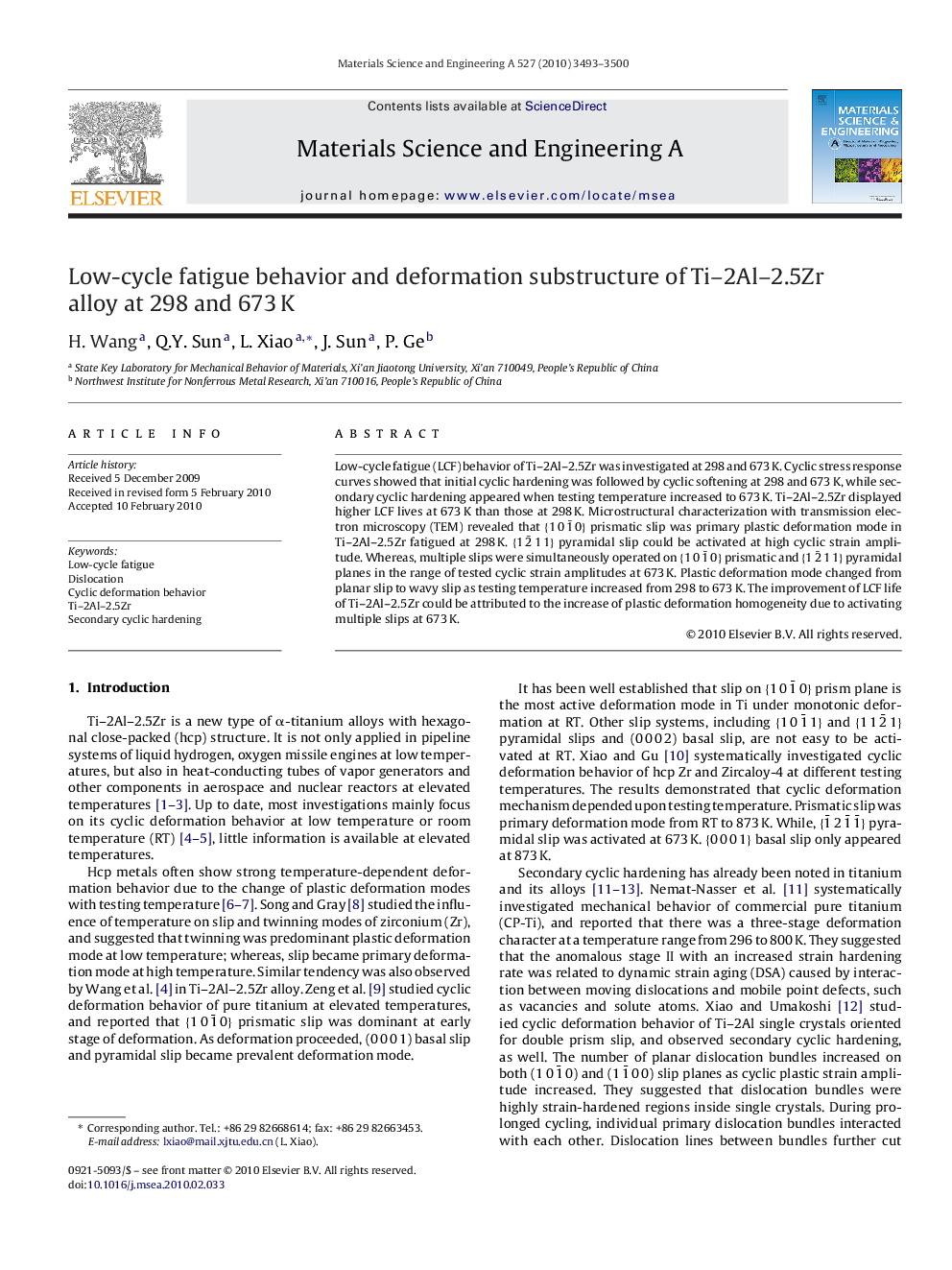| Article ID | Journal | Published Year | Pages | File Type |
|---|---|---|---|---|
| 1578952 | Materials Science and Engineering: A | 2010 | 8 Pages |
Abstract
Low-cycle fatigue (LCF) behavior of Ti-2Al-2.5Zr was investigated at 298 and 673 K. Cyclic stress response curves showed that initial cyclic hardening was followed by cyclic softening at 298 and 673 K, while secondary cyclic hardening appeared when testing temperature increased to 673 K. Ti-2Al-2.5Zr displayed higher LCF lives at 673 K than those at 298 K. Microstructural characterization with transmission electron microscopy (TEM) revealed that {101¯0} prismatic slip was primary plastic deformation mode in Ti-2Al-2.5Zr fatigued at 298 K. {12¯11} pyramidal slip could be activated at high cyclic strain amplitude. Whereas, multiple slips were simultaneously operated on {101¯0} prismatic and {12¯11} pyramidal planes in the range of tested cyclic strain amplitudes at 673 K. Plastic deformation mode changed from planar slip to wavy slip as testing temperature increased from 298 to 673 K. The improvement of LCF life of Ti-2Al-2.5Zr could be attributed to the increase of plastic deformation homogeneity due to activating multiple slips at 673 K.
Related Topics
Physical Sciences and Engineering
Materials Science
Materials Science (General)
Authors
H. Wang, Q.Y. Sun, L. Xiao, J. Sun, P. Ge,
